STACK AUDIO AUVA 70 SPEAKER ISOLATORS REVIEW
They say you only get one chance to make a first impression. John Scott reviews the AUVA 70 speaker isolators from Stack Audio and finds that first impressions can sometimes be misleading.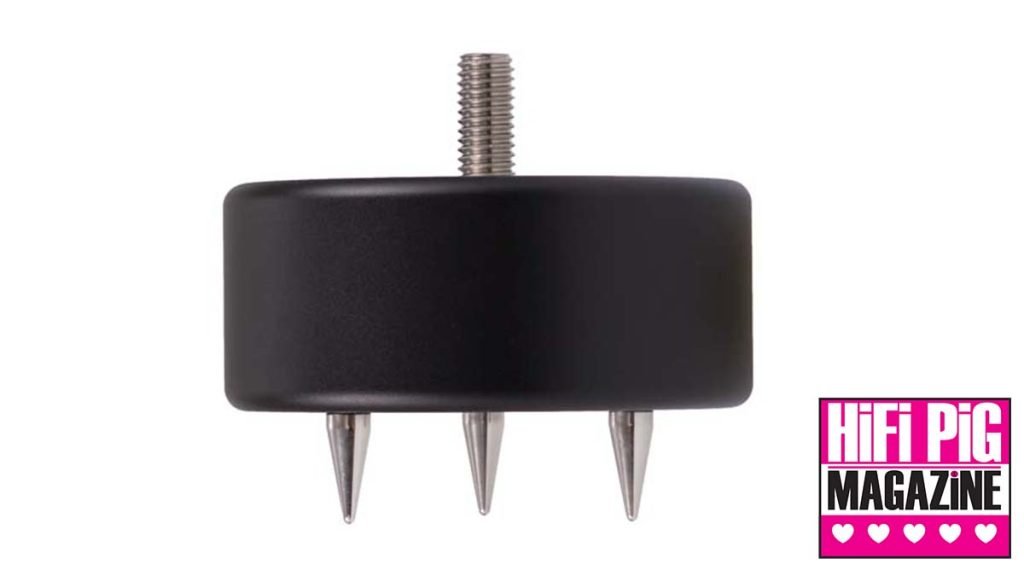
I’m old enough to remember when putting spikes under audio equipment became a thing. One day there were no spikes then suddenly it seemed like all the reviewers in all the HiFi magazines were putting spikes under everything that moved and then raving about the improvements in sound quality.
Without getting into detail, the argument ran that putting spikes under speaker stands (or in the case of floorstanders, the speakers themselves) made the speakers more stable which produced a clearer sound image. Secondly, coupling the speakers to the floor via the spikes dispersed excess energy from the speaker cabinets and/or stands, reducing distortion which could colour the sound. Thirdly, the spikes helped to isolate the speakers from other vibrations in the room, again resulting in improved sound quality.
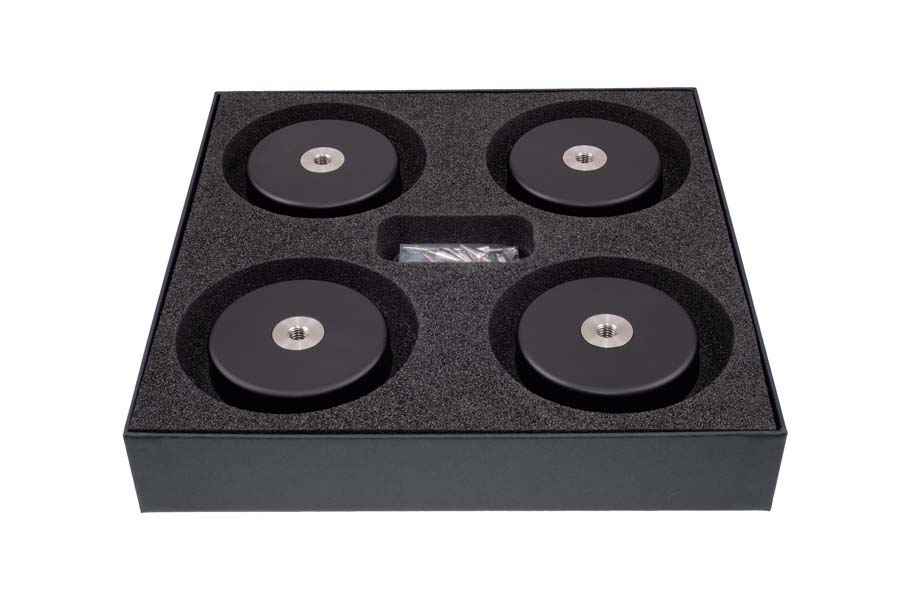
The footers from Stack Audio come nicely presented
And so spikes became an accepted part and parcel of the HiFi world; it’s hard now to imagine life without them. That wasn’t the end of things though, spikes were just the (often very sharp) tip of the iceberg. Coupling was all well and good, but many people argued that isolation was where the real gains were to be had, and before long it seemed as if no HIFi journey was complete until every component in your system sat upon a chopping board purchased from a Scandinavian home furnishing superstore (he means IKEA- Ed) and half a dozen sawn-in-half squash balls. And for some reason, people think HiFi enthusiasts are a bit odd. While small-scale wars have continued to wage between couplers and isolationists, that may be about to change as Stack Audio has incorporated both approaches into their AUVA Isolators.
Stack Audio manufacture two AUVA (AUdio Vibration Absorber) products, the AUVA 70 and the AUVA 100. Both products will support speakers up to 275kg. M6, M8 and M10 threadings are supported. If you are unsure what thread your existing spikes are, Stack Audio will be happy to advise. The AUVA are normally supplied as a set of eight (four per speaker) but can also be purchased as a set of six if appropriate to your speakers. The AUVA 100 is a larger version of the 70 with twice the surface area and a five-cell internal structure rather than the 70’s three cells (see below) for improved performance. I was supplied with a set of the AUVA 70s for this review.
UNBOXING AND BUILD
The AUVA 70s arrived in two presentation boxes (4 per box). The boxes are of good-quality card construction; black with the Stack Audio logo inlaid in silver on the lid. Internally, the individual isolators and associated threaded inserts and bolts are cosseted by a foam insert. It’s an elegant package that reflects the price of the product; opening the box to reveal the contents was like opening the box on an expensive piece of jewellery. Attractive packaging is a nice touch; you may never look at the box again after you have fitted the isolators to your speakers but it undoubtedly adds an element of perceived value to the product. Incidentally, the larger AUVA 100s come in a wooden presentation box.
I have previously reviewed Stack Audio’s Linn LP12 modifications and also the company’s Link 2 streamer. First-class engineering and build quality run across all of these products and the AUVA 70s are no exception. The isolators are machined from aluminium and are black anodised. As with the packaging, the build quality exudes a sense of quality that reflects the product’s price point.
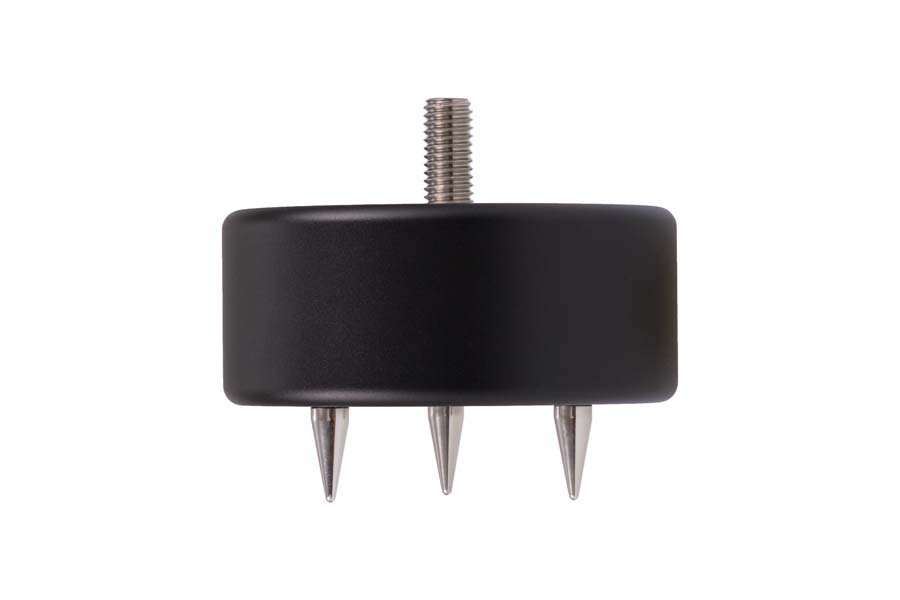
A side view of the Stack Audio footers showing their spikes attached, though these can be exchanged for pads depending on your flooring
Internally, the technology within the isolators is patent pending. Within each isolator, three cells contain particles of material including tungsten that dissipate vibrations and convert them to heat. I gave the isolators a shake and could hear what I would describe as “metallic sand” moving within them. I don’t know how accurate this description is but Stack Audio itself describes the absorption of the vibrations as being like throwing a ball into the sand pit – the sand absorbs the energy from the ball and it is stopped dead in its tracks. Three spikes screw into the base of each isolator for use on carpeted surfaces. Alternatively, for wooden floors, an adhesive felt pad can be attached to the base of the isolators to prevent the damage that spikes might cause. If you fit the pads, the spikes can still be added later should your flooring type change. The top of each isolator houses a threaded insert that accepts an attachment bolt that connects the isolator to your speaker. Stack Audio will provide the appropriately-sized bolt for your speaker.
SET UP
Set Up took a matter of minutes. I disconnected my speakers, laid them flat on the floor and unscrewed the existing spikes. I then screwed three AUVA spikes into the base of each isolator and the connecting bolt into the top of each isolator. The isolators were then simply screwed into the holes where the original spikes had been. Job done. Stack Audio also supplies a set of nuts for each connector in case the isolators need to be individually adjusted to ensure leveling, but I found that these were not required. With a total of twelve spikes gripping the carpet under each speaker, the Sincerus 80s were noticeably more stable than they had been previously.
Shortly after I had installed the isolators, I received a text from Theo Stack at Stack Audio inviting me to give him a call if I was having any problems with the installation. The installation had been so straightforward that I felt sure that there must have been some tricky, vitally important bit that I had missed so I gave Theo a call just in case. Nope – all good, phew! Helpfully, Stack Audio provide some advice on speaker placement as part of their installation instructions and also a couple of Deoxit wipes to clean up your speaker terminals and help you get the most from your upgrade.
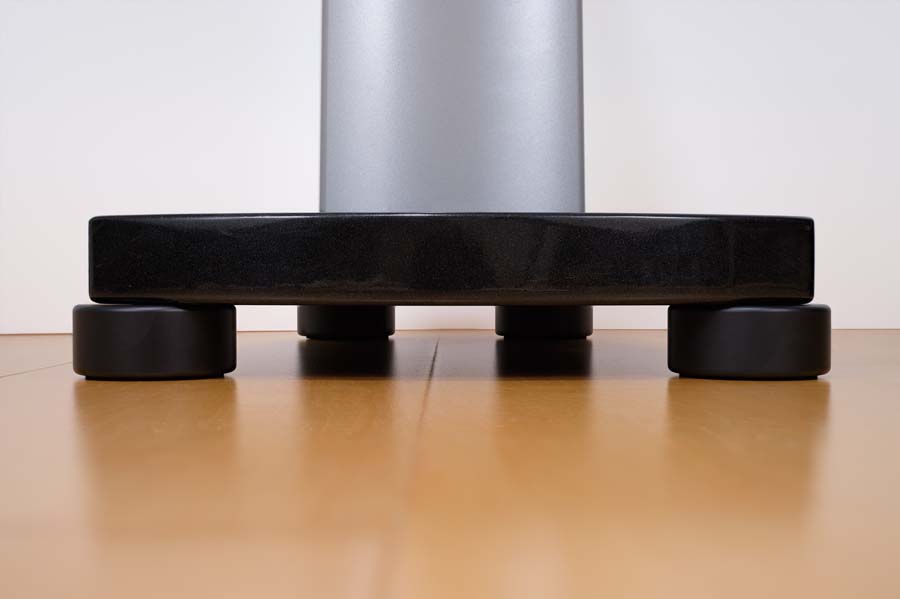
The footers in use
SOUND QUALITY
Before we get to sound quality, there is a bit of a back story that seems relevant to mention. At the time the AUVA 70s arrived I was having a new bathroom installed. While the bathroom installation was reasonably straightforward, it was a period of time characterised by banging, drilling, sawing, dust and debris. The front door was almost permanently open so that workmen could come and go, it was often -5C outside and there was no point in having the central heating on as the heat all just rushed out of the door. Hardly the ideal conditions in which to review audio equipment.
Obviously, I couldn’t resist trying the AUVA 70s out so after the workmen had finished for the day, and before I popped over to visit my son so that I could get a shower, I played a couple of tracks. Did the AUVAs make a difference? Yes, I felt sure that I could hear more detail from my Audio GE Sincerus 80 speakers and the soundstage seemed a bit better, but was it a night and day difference? No, I didn’t think so. Recognizing that conditions were not right, I delayed further listening until work on the bathroom was complete.
Fortunately, it was only a week or so before the work on the bathroom was finished (it’s lovely, thanks for asking). As we needed to give the whole house a thorough clean, I moved my speakers to wipe down the skirting boards behind them and then replaced them more or less where they had been before. Later the next day, with all cleaning done, it was finally time to relax with some music.
From the very first seconds of the radio chatter on Jennifer Warnes’ version of First We Take Manhattan from her Famous Blue Raincoat album I couldn’t believe the difference in what I was hearing; it was the audio equivalent of seeing an image in a camera viewfinder snap into focus when the lens adjusts. Not only was there more detail in what I was hearing but the positioning of voices and instruments, between and around the speakers was completely transformed.
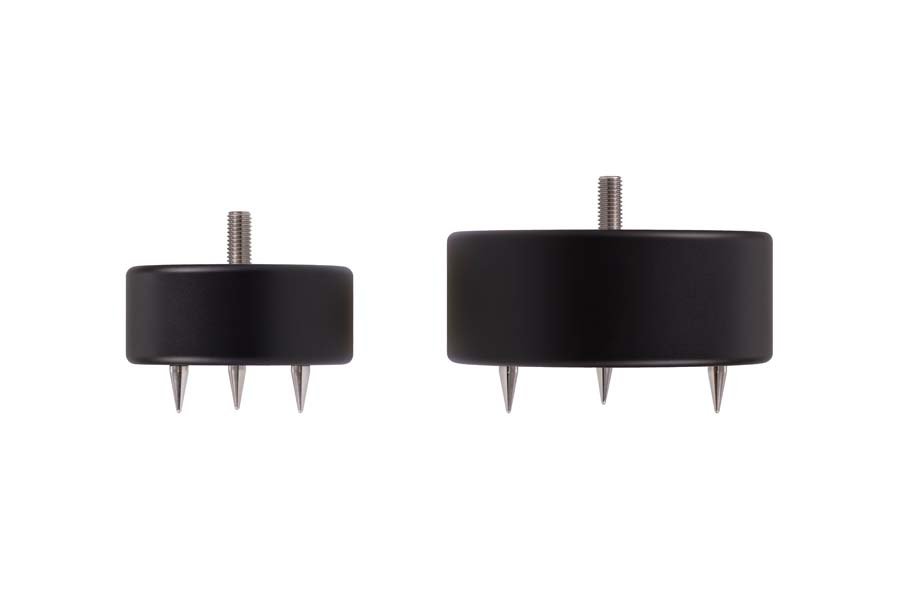
The footers in for review and their larger sibling
Yes, I know, you’re thinking: “ He hasn’t been listening to his HiFi properly for a few weeks, it’s bound to sound better now”. But it wasn’t that; I know how my system sounds and there was now an unmistakable improvement. I was hearing previously-unheard texture in vocals, nuances in production, and, time after time, that extended, hugely-improved soundstage. On Jah Wobble’s Redux album, there is a live version of the reggae classic, Liquidator. At one point a synth line bubbles across from the left speaker, beyond the right speaker and ends up hovering about a foot in front of my right ear. I played it half a dozen times. It did it every time and it had never done it before.
As well as the Audio GE Sincerus 80s in my main system, I have a pair of Linn Keilidhs in another room. Theo had also provided me with a set of connector bolts sized for the Keilidhs and I was keen to discover if the AUVA 70s would provide similar benefits with the Keilidhs as I had heard with the Sincerus 80s. Speakers in my second sitting room tend to suffer from a bit of bass “bloom” and the Keilidhs are no exception to this. With the AUVA 70s fitted, the bass was noticeably tighter and the detail and soundstage were once again improved. First Time Ever (a version of Ewan MacColl’s The First Time Ever I Saw Your Face) from Christy Moore‘s Live At Vicar Street album is a track that can easily go spectacularly wrong with the bass overwhelming everything else, sending the chandeliers [yeah, right – Ed.] rattling. This time around, the bass was tamed; weighty but not boomy. The AUVA 70s were clearly doing something right.
So do I think you should spend nearly £850 improving the sound of a pair of speakers that you can pick up these days for around £250 to £300? Absolutely not. If I had £850 to spend on improving the speakers in my second system I’d sell the Keilidhs and use the money from the sale along with the £850 to buy a better pair of speakers. Then, in the fullness of time, I’d give serious consideration to upgrading those with some AUVAs.
Having established that the AUVA 70s made a positive difference to the Keilidhs, I couldn’t wait to get them back into my main system as restoring the Sincerus 80s original spikes had also robbed me of the AUVAs benefits – sometimes the absence of a product speaks as loudly as its presence.
I have been living with the AUVA 70 for a few months now and consider them to be an indispensable part of my system, although I have the itch to discover if the AUVA 100s would be even better. If you are considering a speaker upgrade, or have a pair of speakers that you really love, and are curious as to whether you can get more out of them, then I would strongly recommend giving either the AUVA 70s or 100s a try. Stack Audio offers a 30-day money-back guarantee so if you think they might be worth giving a go, don’t take my word for it, find out for yourself.
CONCLUSION
The benefits of spikes under speakers or speaker stands are well-established and it is rare now to find speakers and stands that don’t come with spikes as an option. I suspect many of us, myself included, have been happy to accept that our speakers sound as they do without investigating the benefits of isolation. Alternatively, we may have tinkered with a homemade tweak, perhaps involving paving slabs and Sorbothane. Stack Audio’s AUVA 70 isolators offer a superbly engineered, easy-to-fit isolation solution with clear audio benefits and come highly recommended.
AT A GLANCE
Build Quality:
In common with Stack Audio’s other products, the AUVA 70s are engineered and finished to an exceptionally high standard in line with their price point
Sound Quality:
The AUVA 70s brought clear improvements to both sets of speakers that I paired them with.My experience suggested that the better the speaker, the greater the overall improvement is likely to be although results will no doubt be variable depending on individual factors such as flooring type
Value for Money:
Value for money is a matter of perspective. £840 is a lot of money to pay for a set of feet for your speakers but as an alternative to a speaker upgrade could offer something of a saving. As a physical product, you don’t see a lot for your money but the audio benefits are clear to hear
We Loved:
The AUVA 70s lifted the sound of my system to another level
We Didn’t Love So Much:
Bit pricy but no quibbles at all with the actual product
Elevator Pitch Review: The Stack Audio AUVA 70s provided a substantial improvement to a system that I was already very happy with. As an alternative to a speaker upgrade, the AUVA 70s are very much worth considering, particularly if you have not investigated isolation products before.
Price: AUVA 70s – £840 for 8. AUVA 100s – £1240 for 8

John Scott


















































































































































































































